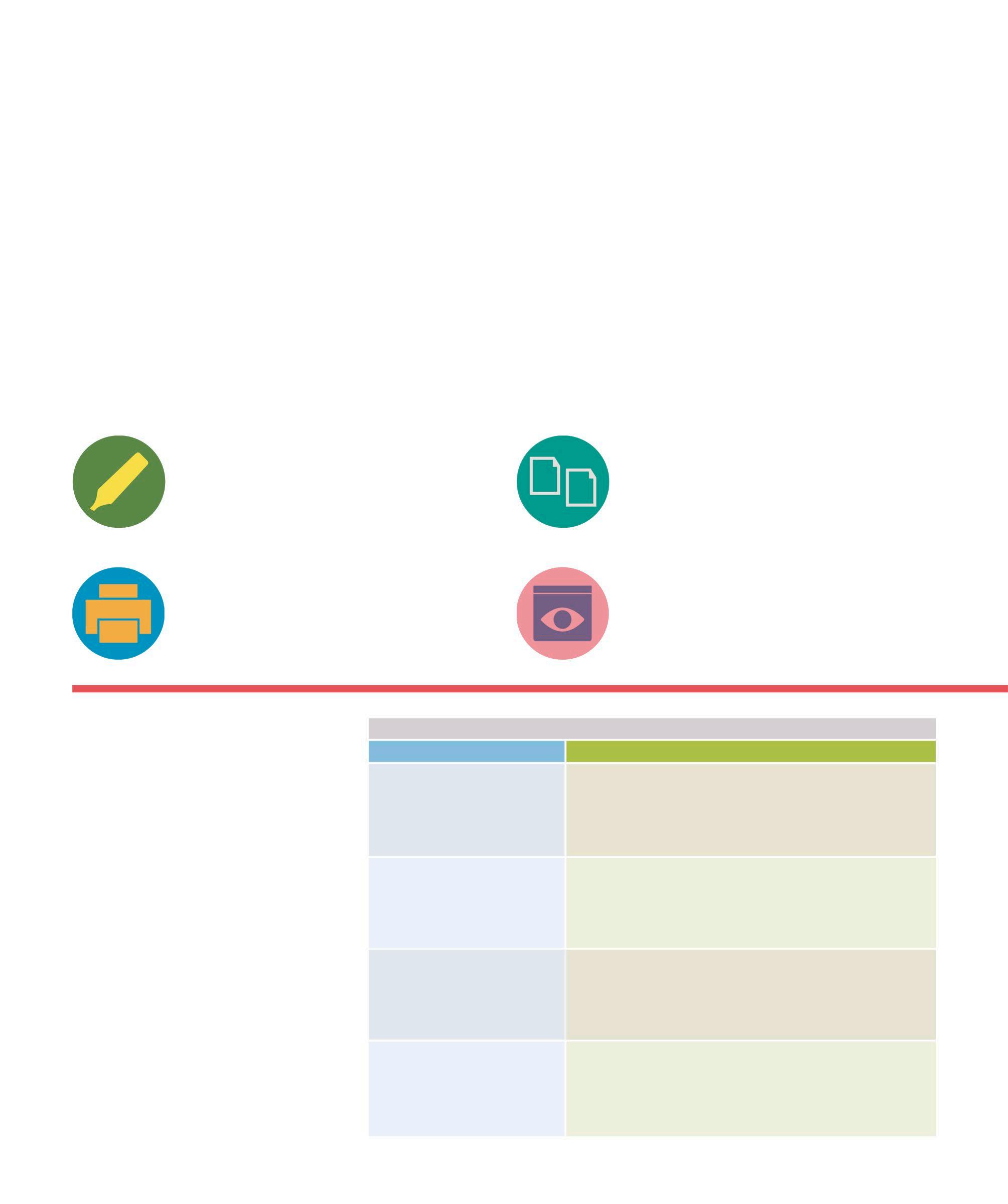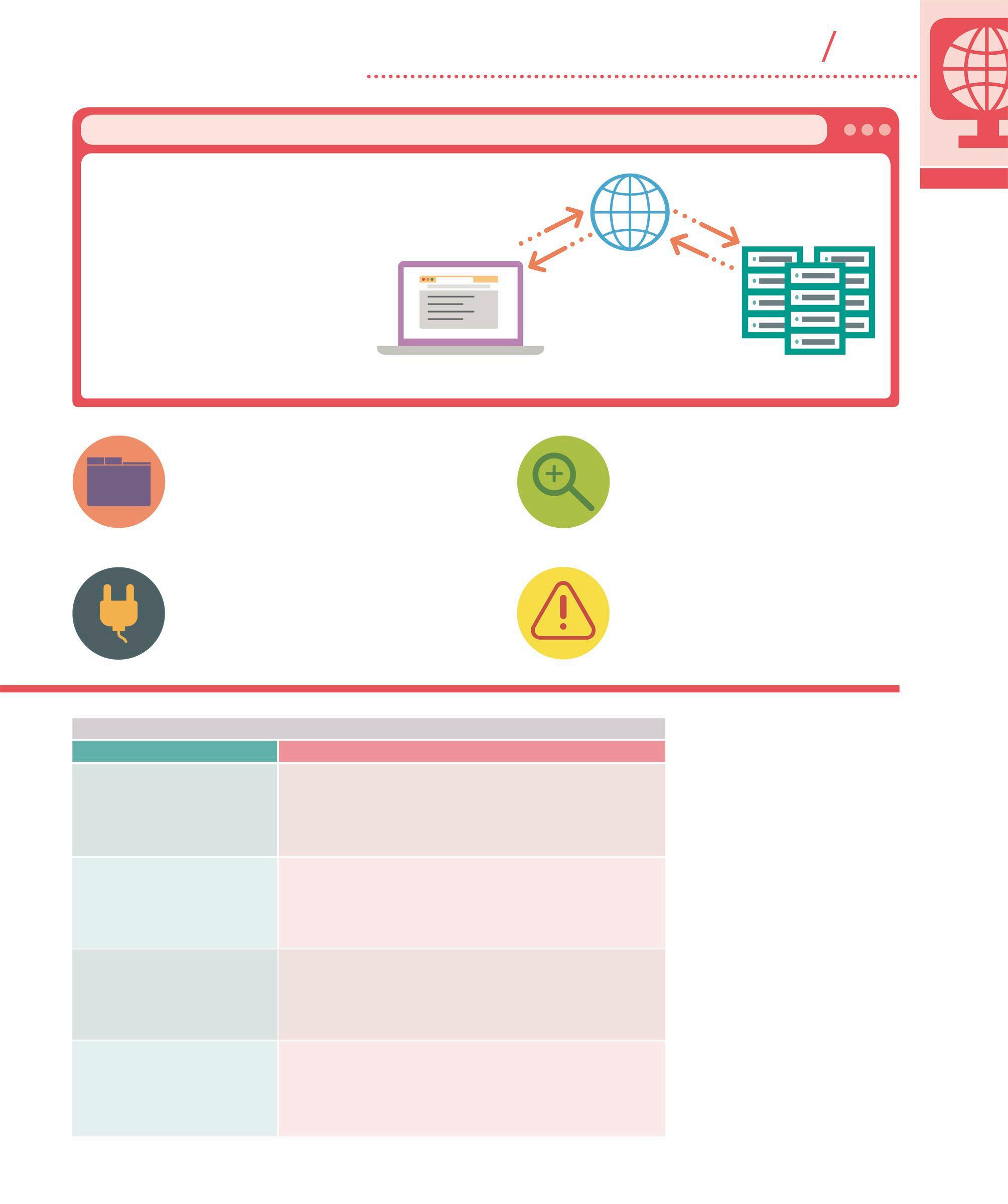
4 minute read
Code editors
One of the most important tools for programmers, code editors are specifically designed for editing the source code of computer programs. They can be stand-alone applications or part of any IDE (see p.23) or web browser. A number of code editors are available online, all customized to fit specific work situations or programming languages.
Code editor tools
Advertisement
Simple text editors, such as Notepad, can be used to write code, but they cannot enhance or ease the process of code editing. The code editors available online have specialized functionalities, or certain built-in features, that simplify and accelerate the process of editing. These elements automate common repetitive tasks and assist the programmer to write better software by identifying problems and debugging code. Some of the most useful code editor tools are listed here.
Syntax highlighting
Displays different parts of the code in different colours, making the code easier to read. For example, HTML tags are highlighted in one colour and comments are highlighted in another colour.
Multiview
Allows the programmer to view multiple files side by side. Some code editors even allow two instances of the same file to be viewed alongside each other.
Printing
Enables the programmer to print a hard copy of the code. The output can then be shared and used as a tool to facilitate communication and problem solving.
Preview window
Allows the programmer to see a quick representation of how the HTML code will render without having to start a web server to execute the code.
Types of code editors
There are two types of code editors most commonly used by programmers – lightweight editors and IDEs. The choice of editor to be used depends on the programming language and the type of program to be edited.
Code editors
Brackets
Atom
Sublime Text
Lightweight editors
These editors are used to open and edit a file instantly. They have basic features and are fast and simple to use. Lightweight editors can only be used when working on a single file. This table lists some of the most commonly used lightweight editors.
Visual Studio Code
LIGHTWEIGHT EDITORS Features
An open source code editor that focuses on web development languages, such as HTML, CSS, and JavaScript. It has lots of useful extensions and plugins. (http://brackets.io/)
A hackable open source code editor that supports many languages and is designed primarily for web development. Atom is well integrated with Git (a free system for tracking changes in source code) and has lots of custom plugins. (https://atom.io/)
A small but powerful code editor that works with several languages and has many tools and shortcuts to aid coding. (https://www.sublimetext.com/)
Smaller and simpler than the Community edition (see right), Code is a very popular editor that can work with many languages and has advanced features. (https://visualstudio.microsoft.com/)
CLIENT-SIDE AND SERVER-SIDE SCRIPTING
In client-side scripting, processing takes place in a web browser. The code is transferred from a web server to the user’s browser over the Internet.
In server-side scripting, processing takes place on a web server. The user sends a request to the web server over the Internet, which is fulfilled when the server generates dynamic HTML pages in response and sends them to the user’s browser through the same channel.
Client-side code runs in the browser
CLIENT SIDE
Tabs
Tabs provide an easy way to arrange and manage multiple open files in a code editor. Each tab displays the name of a file, and clicking the name displays the file in a code window.
Plugins
Many code editors allow programmers to write plugins to extend the features of a code editor. For example, adding a spell checker or a plugin to format HTML.
INTERNET

Server-side code runs on the web server
SERVER SIDE
Zoom
Zooming in makes a part of the text larger and easier to read, while zooming out offers a quick way to view the entire document on the screen in one go.
Error and warning marks
These indicate the presence of a spelling mistake or a syntax error that could cause the program to stop executing or behave unexpectedly.
Code editors INTEGRATED DEVELOPMENT ENVIRONMENT Features
WebStorm A fully featured IDE for web development that uses client-side JavaScript frameworks (see pp.284–85), such as Angular, TypeScript, Vue, and React, and server-side development applications, such as Node.js. (https://www.jetbrains.com/webstorm/)
NetBeans
CodePen Can be used for developing web and desktop applications using open source languages, such as Java and PHP, and web development languages, such as HTML, CSS, and JavaScript. (https://netbeans.org/)
An online code editor that can be used for testing and sharing HTML, CSS, and JavaScript code snippets. It is very useful for finding important components to use on websites. (https://codepen.io/)
Visual Studio Community Used to create web and desktop applications for Microsoft, Apple, and Linux environments. It helps programmers build large-scale systems using multiple languages and frameworks. (https://visualstudio.microsoft.com/)
IDEs
IDEs are powerful editors that work with many languages and have advanced features that enable a programmer to integrate several languages into a single solution. IDEs are used when working on the entire project. This table lists a few commonly used IDEs.










